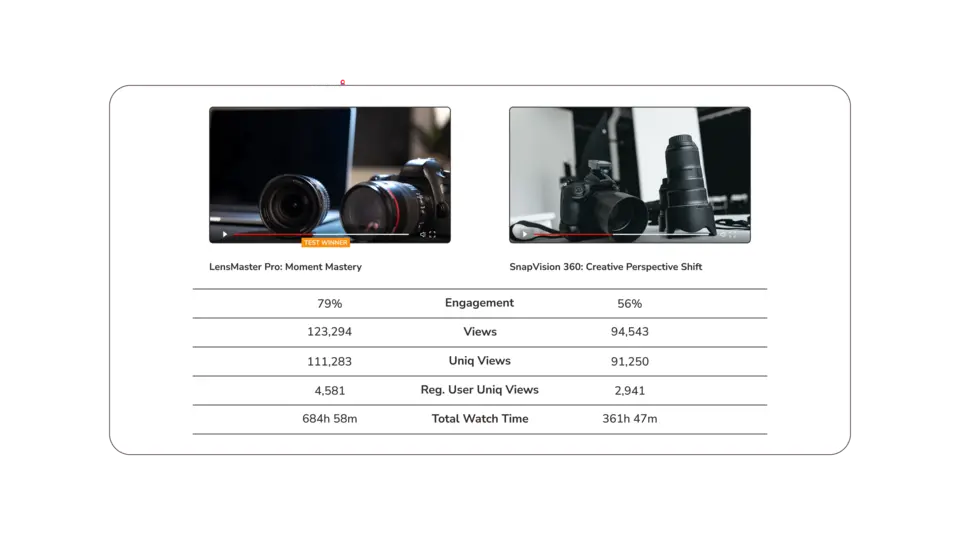What is key performance indicator tracking for videos?
Key performance indicator (KPI) tracking for videos refers to the process of measuring defined metrics that show how effectively a video achieves its goals. It helps teams evaluate engagement, conversions, and viewer behaviour to guide better decision-making. With reliable KPI tracking, every video becomes a measurable asset that contributes to audience insight, brand growth, and content performance.
Definition of key performance indicator tracking for videos
KPI tracking for videos enables creators and organisations to assess video effectiveness based on quantifiable data points, and is a feature offered by some of the best video hosting platforms. Core functions include:
- View count and completion rate: Evaluate how many people watch and how long they stay engaged.
- Engagement metrics: Measure likes, comments, and in-video interactions.
- Conversion performance: Track sign-ups, form submissions, or click-throughs from embedded CTAs.
- Retention tracking: Identify moments where viewers drop off during playback.
- Playback rate: Understand how often videos are started compared to total impressions.

Why does KPI tracking matter?
KPI tracking matters because it replaces assumptions with measurable insight. Without defined performance metrics, teams rely on surface-level numbers like total views without understanding real engagement or outcomes. By aligning data with objectives such as lead generation, education, or awareness, KPI tracking ensures that every video is accountable to clear goals.
On interactive video platforms, KPI tracking can also measure deeper interactions such as button clicks, poll responses, and quiz completions; helping brands and educators link viewer behaviour directly to results.
What are the benefits of KPI tracking for videos?
The benefits of KPI tracking include clarity, precision, and continuous improvement. It enables teams to refine creative decisions based on measurable performance rather than intuition. Reliable analytics help identify which videos deliver the best engagement, improve ROI, and reduce wasted effort.
For example, completion rate and conversion data can guide how marketers plan future campaigns or how educators design course materials. These insights enhance the overall video hosting strategy, ensuring each video serves a defined, measurable purpose.
Applications of KPI tracking for videos
KPI tracking plays a vital role in how different sectors understand and optimise video performance. Marketing teams rely on analytics to assess campaign effectiveness and audience retention. Educators use tracked metrics to confirm learner engagement and completion rates. Agencies and enterprises use KPI dashboards to identify content trends, refine messaging, and measure real communication impact.
By integrating solutions like analytics for interactive video, teams can visualise performance data in real time and quickly identify where to improve content flow, viewer engagement, or learning outcomes.
How Cinema8 uses KPI tracking for videos
Cinema8 provides built-in KPI tracking through its video analytics dashboard, helping creators, brands, and educators monitor engagement across every video. Metrics such as completion rate, click-throughs, and in-video interactions are automatically captured and displayed through intuitive visual reports.
By combining detailed analytics with interactive design tools, Cinema8 helps users understand audience behaviour and optimise for better performance. Whether for marketing, training, or storytelling, KPI tracking in Cinema8 ensures every video drives measurable and actionable results.
Book a demo to see how Cinema8’s KPI tracking tools help you analyse, refine, and elevate your video strategy through data-driven insights.